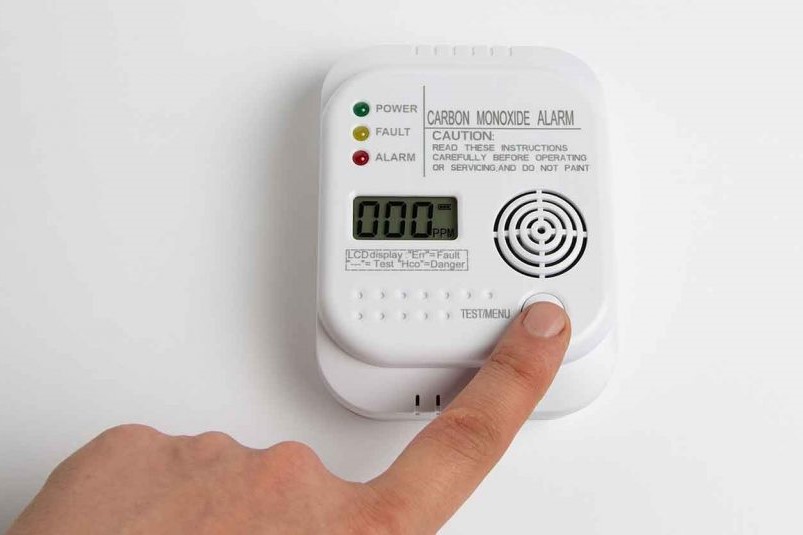
Carbon monoxide poisoning: first aid maneuvers and the importance of detectors
Carbon Monoxide is a colorless, tasteless and odorless gas, generally found in combustion fumes produced by charcoal grills, heaters, fireplaces, car engines, portable generators, car mufflers and more
Carbon Monoxide poisoning occurs when one inhales too much of these combustion fumes
The body replaces oxygen with carbon monoxide in the cells if there is too much carbon monoxide in the air you breathe, which prevents the oxygen from reaching your organs.
Smoke inhalation during a fire can also lead to carbon monoxide poisoning. (Mayo Clinic, 2019)
Symptoms of Carbon Monoxide Poisoning
Carbon Monoxide Poisoning presents itself as all the symptoms of the flu but without a fever.
The longer a person is exposed to Carbon Monoxide, the worse the symptoms get. (Brazier, 2017)
Some of the common symptoms are:
- Dull Headache
- Dizziness
- Nausea or Vomiting
- Weakness
- Blurred Vision
- Shortness of Breath
- Confusion
- Loss of Balance
- Memory Problems
Serious poisoning can also cause long-term problems, like heart damage. (Kahn, 2018)
Risks of Carbon Monoxide Poisoning
While exposure to Carbon Monoxide is bad for all, it may cause further damage in the following cases:
- People with Chronic Heart Disease: People suffering from or with a history of anemia or with breathing problems are more susceptible to harm from carbon monoxide poisoning.
- Elderly: Older adults who are exposed to too much carbon monoxide are more likely to suffer from brain damage.
- Children: Since children take more breaths than adults, they are exposed to more carbon monoxide and can fall sick faster.
- Unborn Babies: Fetal blood cells can absorb carbon monoxide more readily than adult blood cells, leading to higher susceptibility to carbon monoxide poisoning.
- Carbon monoxide can be far more dangerous for people who are intoxicated or sleeping. If a person becomes unconscious because of carbon monoxide poisoning, it means they are more affected. This can result in irreversible brain damage or even death before the problem can be diagnosed. (Mayo Clinic, 2019)
Prevention of Carbon Monoxide Poisoning
A few simple precautions can help avoid or lessen the leakage of carbon monoxide into the air.
Ensure you follow these precautionary measures:
- Keep your home appliances like charcoal grills, heaters, generators, etc. in proper working order and get them serviced regularly.
- Make sure your rooms and all spaces are well-ventilated and that vents are not blocked.
- Do not leave any vehicles running in a closed garage, especially if it is an attached garage.
- Sweep and clean the chimneys and flues thoroughly by a professional, at least once a year.
- Do not use a generator within 20 feet of your window, vent, or door.
- Do not use charcoal for indoor grills. Ensure that you do not certain appliances like gas stove indoors or in a closed environment.
- Service the exhaust pipe of motor vehicles regularly.
- Wear a mask or be cautious when exposed to methylene chloride. (Brazier, 2017)
Installing carbon monoxide detectors is also a great way to prevent any mishaps
There are detectors available that sound an alarm if the carbon monoxide in the air crosses a certain limit.
Such detectors are also available for boats and motor homes. (Mayo Clinic, 2019)
In the case of exposure to carbon monoxide, immediately call Emergency Number and seek professional help.
Avoid the place of the incident until the source of the poisoning can be found and repaired, with the help of professionals.
References
Carbon Monoxide Poisoning. 16 Oct. 2019, www.mayoclinic.org/diseases-conditions/carbon-monoxide/symptoms-causes/syc-20370642.
Kahn, April. “Carbon Monoxide Poisoning: Overview, Symptoms and Diagnosis.” Healthline, Healthline Media, 29 Sept. 2018, www.healthline.com/health/carbon-monoxide-poisoning.
Brazier, Yvette. “Carbon Monoxide (CO) Poisoning: Symptoms, Causes, and Prevention.” Medical News Today, MediLexicon International, 11 Dec. 2017, www.medicalnewstoday.com/articles/171876.
Read Also
Emergency Live Even More…Live: Download The New Free App Of Your Newspaper For IOS And Android
Irritant Gas Inhalation Injury: Symptoms, Diagnosis And Patient Care
Respiratory Arrest: How Should It Be Addressed? An Overview
Toddler Home Safety: Children At Home, Some Information For Parents
Smoke Inhalation: Diagnosis And Patient Treatment
Emergency Rescue: Comparative Strategies To Exclude Pulmonary Embolism
Pneumothorax And Pneumomediastinum: Rescuing The Patient With Pulmonary Barotrauma
Barotrauma Of The Ear And Nose: What It Is And How To Diagnose It
Decompression Sickness: What It Is And What It Causes
Seasickness Or Car Sickness: What Causes Motion Sickness?
Identifying And Treating Carbon Monoxide Poisoning
Emergency Live Even More…Live: Download The New Free App Of Your Newspaper For IOS And Android
What Should Be In A Paediatric First Aid Kit
Chemical Burns: First Aid Treatment And Prevention Tips
Heimlich Maneuver: Find Out What It Is And How To Do It
Electrical Burn: First Aid Treatment And Prevention Tips
4 Safety Tips To Prevent Electrocution In The Workplace
Neonatal/Pediatric Endotracheal Suctioning: General Characteristics Of The Procedure
Food Poisoning: Know The Symptoms And First Aid Treatment
Electrical Injuries: How To Assess Them, What To Do
Emergency Burn Treatment: Rescuing A Burn Patient
First Aid For Scalding: How To Treat Hot Water Burn Injury
Electric Shock First Aid And Treatment
First Aid, Identifyng A Severe Burn
Identifying And Treating Carbon Monoxide Poisoning


